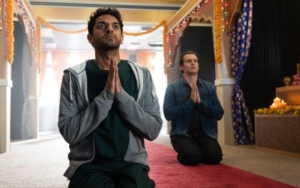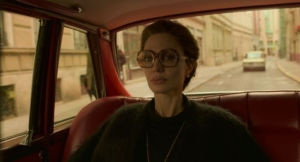
This sprawling, meditative documentary starts out drawing connections between seemingly disparate subjects: Tibetan monks shaping colored sand into patterns to create a work of art, a mandala; a runner who crossed Death Valley in the heat of summer; a photographer obsessed with the oldest life forms on Earth. There are more, many more, who in one-on-one interviews with director Steve Elkins repeatedly emphasize the importance of living at a slower pace and the wonders of the planet.
But the interviewees aren’t just talking about survival. By slowing down, they argue, we start to notice the invisible forces present in the world around us and allow submerged knowledge to reemerge. Slowness becomes equated with silence as the film takes us to remote locations devoid of any light or sound pollution, such as the site of the Very Large Telescope in Chile’s Atacama Desert and the Chihuahuan Desert in West Texas. Some locations are where experiments in extreme physics are performed because of this lack of man-made disruption.
There is heady stuff that could potentially fly over audiences’ heads, but at least for the first half, Elkins does a skillful job of weaving together his central protagonists, making them appear thematically linked, even if they never physically cross paths. Along with the aforementioned runner and photographer—Al Arnold and Rachel Sussman, respectively—we get to know the Pulitzer Prize–winning ex-foreign correspondent Paul Salopek, who sets out to re-create mankind’s first primordial journey across the world. Salopek will travel from Ethiopia to Tierra del Fuego in Argentina, and just like early man, he plans to do so largely on foot.
Elkins cuts back and forth among the trio so they seem to be on the same ride. For example, at roughly the same point in the film, all three receive a painful reminder of their own mortality. There is also stunning photography that draws us in. Sussman provides images of plants that have spent millenniums adapting to their environs—and their dramatic struggles are visible in their shape and features. Similarly, Salopek’s video recordings of those he meets are portraits full of humanity, despite sometimes set against backdrops of war and death.
As if its narrative were not ambitious enough, the film also includes interludes about how mankind, by nature, always tries to push the proverbial envelope regarding the visible world. Elkins delves into many of the possible unseen forces that serve as the connective tissue between us: Higgs boson, aka the God particle theory; deep memory; ancient bacteria; mystical spirits. This lengthy section is where Echoes of the Invisible starts becoming too didactic for its own good with lots of exposition but not much human drama.
The film also spends a significant amount of time on Salopek and Arnold, and while they, along with Sussman, come across as compelling and thrill-seeking enough to warrant their own documentaries, their portrayals are sometimes problematic. In the case of Salopek, he makes an uncomfortable judgment about how urbanization has transformed Saudi Arabia for the worse without ever seeming to consider that certain segments of the populace might actually be better off. He also declares that the world is a relatively safe place—notwithstanding his being detained 84 times by the police during his trek—without acknowledging his privilege as a straight white man and how in some of the more conservative corners he travels through, it might not be so safe if he were, say, a woman or LGBTQ.
As for Arnold, Elkins’s handling of his story utilizes a third-act surprise, reminding us you don’t need Death Valley to be subject to an extreme environment; it’s all relative to the person experiencing it. However, we already have learned this lesson from an earlier episode of Arnold’s life, when his vision began deteriorating during his training, making the rocky terrain a lot more dangerous. Emotionally, the last-minute twist doesn’t add much to the film.
Nevertheless, Echoes of the Invisible boasts strong visuals and shares many stimulating ideas. It also might be particularly appealing to watch right now during these days of mass self-isolation, given Salopek’s overarching message about how we need to travel to faraway places and reach across cultural boundaries. He believes that not enough of that happens. Perhaps after the pandemic crisis finally passes, there will be pent-up demand to take him up on his challenge.
Echoes of the Invisible was originally scheduled to premiere at this year’s SXSW Film Festival.
















Leave A Comment